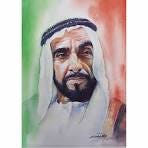The United Arab Emirates (UAE) played an important leadership role during its COP28 presidency, culminating in a conference of November 30 to December 12, 2023. The UAE forged a consensus agreement on a foundation of extensive engagement with the developing countries, an agreement that begins implementation of the demand of the Global South for greater responsibility by the advanced economies in addressing the costs of environmental damage and climate change.
“COP28 delivers historic consensus in Dubai: Recognizing the claims of the Global South,” December 15, 2023
The United Arab Emirates returns to center stage with its hosting of the World Governments Summit on February 12-14, 2024, promoting a dialogue across ideologies, cultures, and civilizations in the appropriation of advanced technologies by governments, so that they can more effectively attain their development and modernization goals.
“Cuba and the World Governments Summit 2024: The sharing of insights and tech gai…


